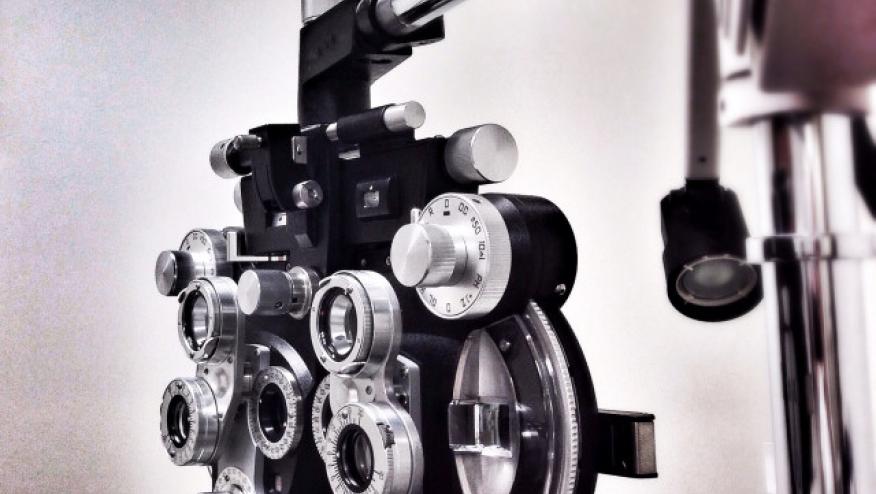JAK Inhibitors Reduce Macular Degeneration Save

Insurance claims data showed that patients with autoimmune disorders who took Janus kinase (JAK) inhibitors had lower rates of age-related macular degeneration (AMD), hinting that the drugs might treat the common eye disease.
Compared to patients on other immune-modulating drugs, those taking JAK inhibitors had lower rates of AMD over 6-18 months in two administrative databases: by about half in a MarketScan cohort (adjusted incidence rate ratio 0.51, 95% CI 0.19-0.90) and by nearly three-quarters in an Optum cohort (aIRR 0.27, 95% CI 0.03-0.74), according to Nizar Smaoui, MD, of AbbVie in North Chicago, Illinois, and colleagues.
Absolute reductions in risk were 0.36% and 0.32%, respectively, the group reported in JAMA Ophthalmology.
"These results provide supporting evidence of a link between JAK inhibitors and reduced incidence of AMD," Smaoui told MedPage Today. "However, further research and clinical studies are required to confirm this retrospective study."
Importantly, incident AMD was a rare event for the populations studied. Among more than 18,000 patients in the MarketScan group, just 53 new cases developed (10 in JAK inhibitor users and 43 in non-users). And only 24 cases were diagnosed in more than 11,000 Optum patients (three in users and 21 in non-users).
JAK inhibitors, the first of which won FDA approval in 2011, are used to treat cancer and autoimmune disorders in rheumatology and dermatology.
According to Smaoui, researchers launched the study in light of research suggesting "a role of inflammation, and even more specifically the pathway regulated by these drugs, in AMD pathogenesis and progression. In addition, there is genetic evidence that links immune-related genes to the risk of AMD."
Sumit Sharma, MD, of the Cleveland Clinic in Ohio, who has researched JAK inhibitors for uveitis but didn't take part in the new study, told MedPage Today that the findings are interesting. But he cautioned that the implications are limited because of the small population size. Also, "you don't know for sure that all of these patients actually ended up getting eye exams at equivalent rates. Just because they're in the database doesn't mean that they actually got an eye exam, and that the exam was coded correctly."
Still, it makes sense that the anti-inflammatory effect of JAK inhibitors could lower the risk of AMD, he said. The study is "a good first step to point people in the direction to see if there is a role for a treatment with a JAK inhibitor specifically."
Finding new treatments is especially important because there aren't effective therapies for so-called dry AMD, Sharma said. But he cautioned that ophthalmologists shouldn't prescribe JAK inhibitors now because they have a high risk of side effects. As he noted, the FDA has warned that JAK inhibitors come with increased risk of cardiac disorders.
Sharma added that JAK inhibitors in their current form are unlikely to go into clinical trials in AMD. Instead, he said, the medications may be delivered via intravitreal injection, or new drugs could be developed that target the JAK/STAT pathway.
In an accompanying commentary, Jayakrishna Ambati, MD, of the Columbia VA Health Care System in South Carolina, and two colleagues also cautioned that the findings "warrant further clinical and preclinical research."
For the study, researchers studied patients who were taking immunotherapy for autoimmune disorders in the MarketScan and Optum databases from 2010-2022. Each person taking a JAK inhibitor was matched by age, sex, race/ethnicity, geography, autoimmune diagnosis, and other factors to a patient taking another drug type. There were 18,252 people in the MarketScan cohort (76.6% women) and 11,334 in the Optum group (75.2% women). More than 60% in both groups were 55 or older. Approximately two-thirds of patients were under treatment for rheumatoid arthritis, with psoriasis, psoriatic arthritis, and ulcerative colitis accounting for most of the rest.
The study did not address JAK inhibitor side effects or cost. The drugs are highly expensive, potentially costing tens of thousands of dollars a year.
As for limitations, the authors noted the retrospective, nonrandomized, and observational nature of the study. Its design also didn't take severity of disease into account, and the statistical analyses didn't distinguish between "wet" and "dry" forms of AMD, different JAK inhibitor products, or the indications for their use. And "it is not possible to generalize the study findings to populations who do not have inflammatory or autoimmune diseases," the investigators wrote.
Source Reference: Smaoui N, et al "Janus kinase inhibitor therapy and risk of age-related macular degeneration in autoimmune disease" JAMA Ophthalmol 2024; DOI: 10.1001/jamaophthalmol.2024.2376.









If you are a health practitioner, you may Login/Register to comment.
Due to the nature of these comment forums, only health practitioners are allowed to comment at this time.